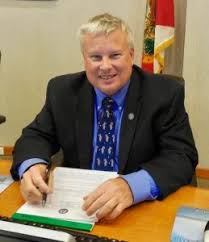Dale Martin
City Manager
Fernandina Beach
June 15,2018 12:00 a.m.

Earlier this month, I attended the annual conference of the Florida City/County Managers Association in Orlando. This event provides an opportunity to examine the current state of affairs in local government, explore new products and services, and to renew acquaintances.
Since being introduced to rail service between Jacksonville and Orlando by my neighbor, I take the Amtrak train whenever possible. The cost is low- $35 each way, then a $15 Uber ride to the hotel, but I get to avoid the $20 daily parking fee at the hotel. The trip, however, should not be made if you are in a hurry (although you shouldn’t be driving on I-4 if you are in a hurry, either). The southbound train, which originates in New York City, is typically late. Once aboard, though, it is an enjoyable trip without the perils of traffic congestion.
The opening keynote speaker of the conference was Dr. Natalie Stavas. Dr. Stavas is a pediatrician and an avid runner. She found herself nearly at the finish line of the 2015 Boston Marathon when two bombs detonated. Dr. Stavas recounted how she was confronted with the spontaneous decision as to how to respond- turn and flee, stand in shock, or charge into chaos. She charged and is credited with saving several lives.
Her message was that as community leaders, we are regularly confronted, usually on a smaller and safer scale, with such decisions. We operate in a very open environment which can be chaotic. How we are “wired” matters greatly to the communities that we serve: are we paralyzed or are we mobilized? When things are chaotic, it is our responsibility to gather accurate information, secure necessary resources, and offer sound recommendations to key community leaders.
We (municipal managers) deal with “chaos” on a daily basis and in a public environment. I am often told by residents that they would not want my job, in part, due to the chaos and scrutiny. That’s fine- every now and then managers need to be reminded that we are “wired” a little differently. I’d surmise, though, that the half dozen or so retired managers in our community from around the country would admit to being similarly wired.
The second keynote speaker was Ms. Amy Holloway, a national economic development consultant. Ms. Holloway shared her insight into some of the current trends affecting communities throughout the country. You’ll see that these challenges are present in Fernandina Beach.
Ms. Holloway indicated that a significant challenge to economic development is the lack of qualified workers. She provided data illustrating that several industries severely lacked sufficiently trained personnel- skilled trades, financial professionals, and service workers. Even with adequate numbers of personnel in those and other affected industries, those personnel may not be available due to other factors.
The leading factor, she contends, is affordability. With the flow of residents now returning to the urban cores following the mid-to-late twentieth century migration to suburbs, housing prices are becoming less affordable. Local governments and businesses have limited methods on how to address this overwhelmingly market-driven problem.
Affordable housing discussions are becoming more frequent in our community exactly for the same reason- how can the labor to support our businesses find adequate housing in the general vicinity of the jobs themselves (rather than miles or counties away which creates new challenges). The reality on the ground is that land and housing prices are increasing as owners capitalize on the demand. It will be interesting to follow over the course of the next several months or years the change of ownership of long-held relatively inexpensive properties as well as the development of properties purchased by area residents for speculative purposes. How will those properties be utilized- will the owners “take the money and run” or will the owners, some of whom publicly advocate for more affordable housing, find a method to support affordable housing? This is not a unique challenge to Fernandina Beach.
The final keynote speaker was Mr. Eugene Robinson, a Pulitzer Prize-winning columnist for the Washington Post. He talked about the problems in Washington, D.C. I’ll let others deal with that “chaos.”
I talked to several vendors about products and services that could be of value to Fernandina Beach. I’ll follow through with those conversations. I also renewed friendships with other managers- some from Michigan and some from Connecticut who have relocated like I have. I often joke about not only literally living and working on an island, but also figuratively- not too many other city managers in our part of Florida.
As I waited for the return train, I wandered around downtown Kissimmee (due to the conference location, my train trip was technically from Jacksonville to Kissimmee, not Orlando). I examined a downtown garbage collection system, studied railroad crossings, pondered vacant storefronts, and looked at streetscape design. I visited a few shops and spoke with patrons and owners. While they all seemed very content, many of them commented “You live in Fernandina? That place is beautiful and we love going there! It must be great to live there.”
Yes, it is.
